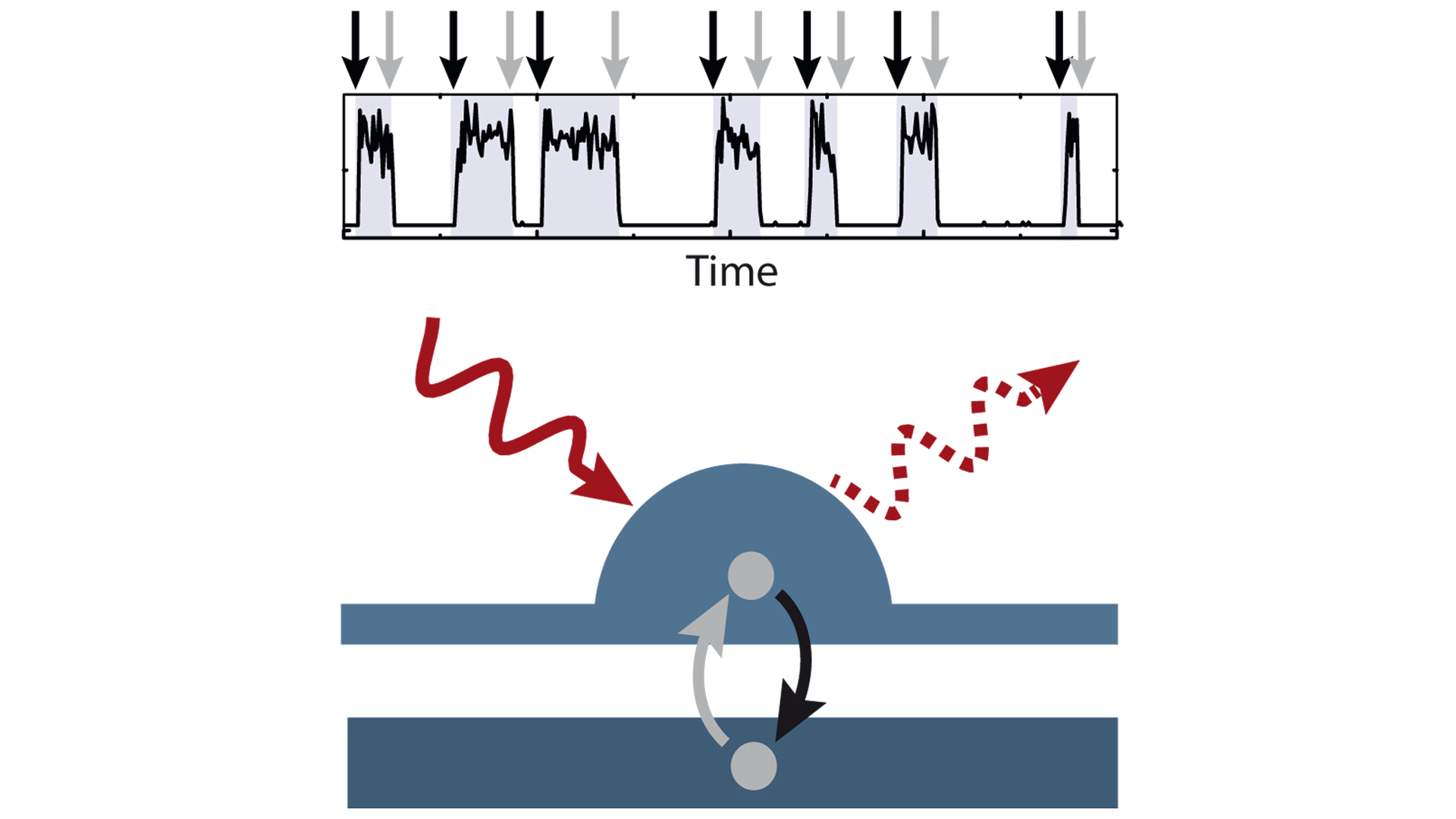
Dynamics in quantum dots
Smallest measurable processes recorded individually
- von Birte Vierjahn
- 29.07.2019
Colloquially, the term “quantum jump” is used to describe a tremendous development. In fact, it is the smallest change of state that can still be traced. Physicists from the Collaborative Research Center 1242 at the UDE have now succeeded in measuring every single jump by optical means and drawing conclusions about the dynamics of the electrons inside a quantum dot. The journal Physical Review Letters reports on this in its 122nd issue.
The experimental setup included a quantum dot – i.e. a solid structure of only about 10,000 atoms – next to a reservoir with electrons. About 100 times per second an electron jumps back and forth between this structure and the reservoir. It can jump into a high or low energy state into the quantum dot and change inside from top to bottom. For the first time, the researchers were able to observe this change through these tiny jumps.
"This measurement of every single quantum jump is the maximum information that can be extracted from a quantum system, because there aren’t any other or faster processes that can be measured”, explains Dr. Martin Paul Geller from the Collaborative Research Center 1242 Non-Equilibrium Dynamics of Condensed Matter in the Time Domain. For the project, the team of experimental physicists collaborated with colleagues from theoretical physics in the working group of Professor Dr. Jürgen König (UDE). The theoretical physicists statistically analyzed the data and for the first time could made statements about the dynamics of the electrons in the quantum dot.
"In principle, we worked with a highly-sensitive optical and fast microscope that has still much room for improvement”, says Geller describing the measurement technology that has been refined by the researchers. Further optimization could outperform any electrical measurement in speed and spatial resolution.
Picture: Lower part: An electron (gray circle) can jump (gray and black arrow) between the quantum dot (ligh-blue hill) and the charge carrier reservoir (dark blue rectangle). The red arrows depicts light, which is used to observe these processes. Upper part: Every quantum jump (gray and black arrows) can be observed by the incident light.
Original publication:
Optical Detection of Single-Electron Tunneling into a Semiconductor Quantum Dot
A. Kurzmann, P. Stegmann, J. Kerski, R. Schott, A. Ludwig, A. D. Wieck, J. König, A. Lorke, and M. Geller
Phys. Rev. Lett. 122, 247403 (2019)
https://doi.org/10.1103/PhysRevLett.122.247403
Further information: Dr. Martin Paul Geller, Faculty of Physics, +49 203 37 9-2237, martin.geller@uni-due.de
Editor: Birte Vierjahn, +49 203 37 9-8176, birte.vierjahn@uni-due.de
